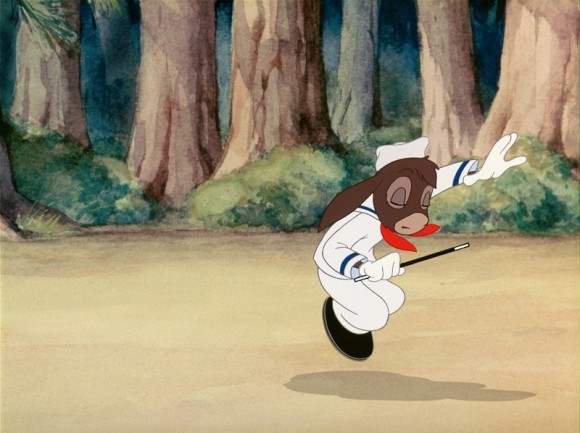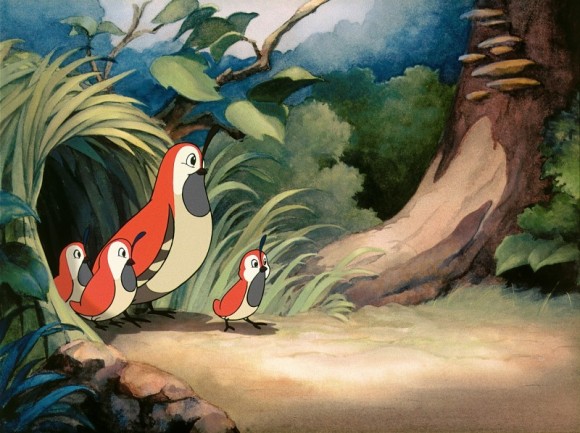The Venice Biennale, the major biannual art festival that is currently ongoing in Venice, Italy, features an animation installation this year. Imitation of Life by Mathias Poledna is housed in the festival’s Austrian Pavilion. The three-minute 1930s-style short was produced by DUCK Studios in Los Angeles, and appears to be a fairly authentic throwback to the classical era, especially in regard to process: it was drawn on paper, inked onto cels and shot on 35mm. (Mark Kausler used similar vintage processes for his recent pair of shorts There Must Be Some Other Cat and It’s the Cat.)
Of course, simply making an animated film isn’t enough to qualify as Art with a capital ‘A’ and it certainly won’t gain a filmmaker admission into the Biennale. Animation has to be recontextualized into a more ‘meaningful’ endeavor, hence this impressively decadent official description for the piece:
A 35mm color film roughly three minutes in length, Imitation of Life was produced using the historic, labor-intensive technique of handmade animation and is built around a cartoon character performing a musical number. Its buoyant spirit and visual texture evoke the Golden Era of the American animation industry during the late 1930s and early 1940s. In the preceding years, the time of the Great Depression, the medium had evolved from a crude form of mass spectacle into a visual language of enormous richness and complexity that shaped and continues to resonate in our collective imaginary.
Imitation of Life appropriates and reassembles this language as it revisits the contradictions and ambiguities that accompanied the medium’s development. Advanced methods of production and visual ingenuity – indebted to the syntax of European modernism in its handling of surface, depth and color, and lauded by the avantgarde and critic intelligence of the time – coexisted with sentimental characterization and storytelling based on age-old fables and fairy tales.
Among the most pronounced features of the film is the extreme contrast between the conciseness of its scene, and the extraordinary amount of labor that went into its creation: more than 5,000 handmade sketches, layouts, animation drawings, watercolored backgrounds and ink-rendered animation cells, produced in close cooperation with acclaimed artists from the animation departments of film studios in Los Angeles, most notably Disney. Several small groups of these drawings are presented in the Austrian Pavilion.
The soundtrack, another key element of the production, was recorded with a full orchestra in the style of the period at the Warner Brothers scoring stage in Los Angeles. It combines new original music created specifically for this project with a re-arrangement of a popular song from the 1930s written by Arthur Freed and Nacio Herb Brown.
Presented in Venice, Poledna’s installation allows for a complex cross-reading with other episodes from this period: the relationship between European art and American mass culture; European emigration to the United States and American export to Europe; the presentation of animated films produced by the Disney Studios at the first film festivals in Venice; the late modernism of the Austrian Pavilion, and the period from 1938 to 1942 during which the building remained empty while Austrian artists exhibited in the German Pavilion.
Beyond its engagement with animation, Imitation of Life incorporates into its fleeting narrative a number of other elements from the early history of entertainment, such as Vaudeville, silent comedy and film musicals, and form diverse artistic forms including film, music, painting and literature. But even while it subscribes to the synergistic logic of its medium, the film deliberately eschews a seamless whole, remaining at once alien and utterly recognizable.
(Thanks, @StephenPersing)
Add a Comment



